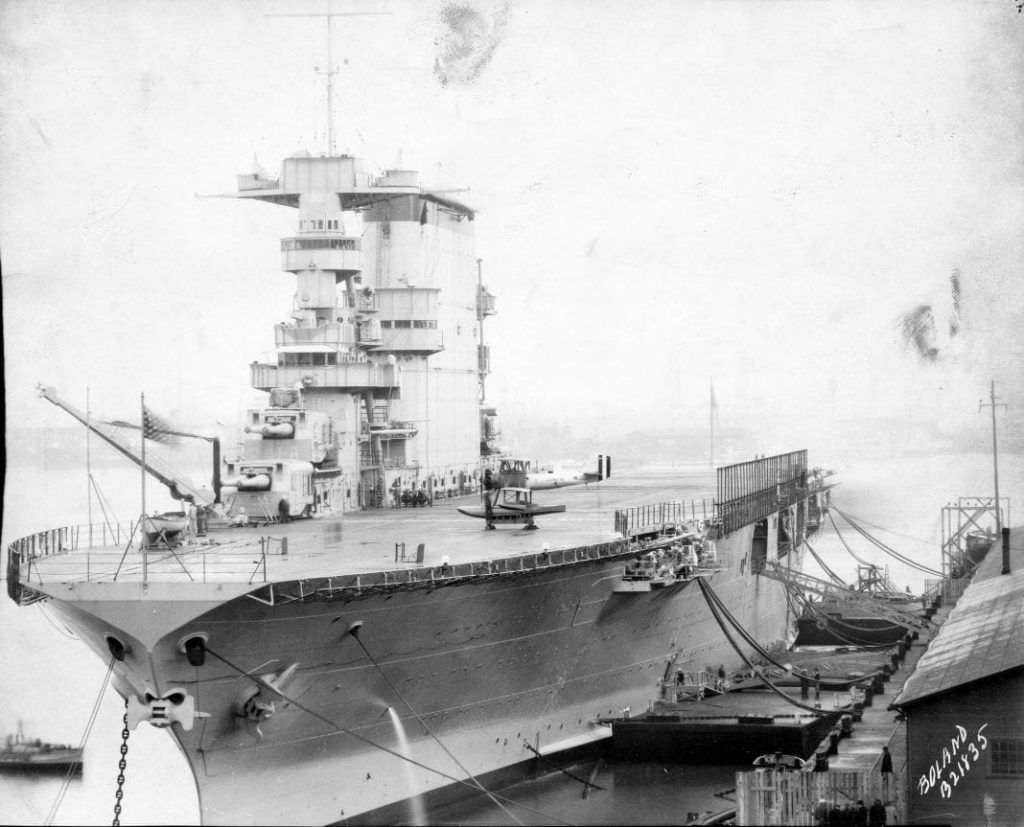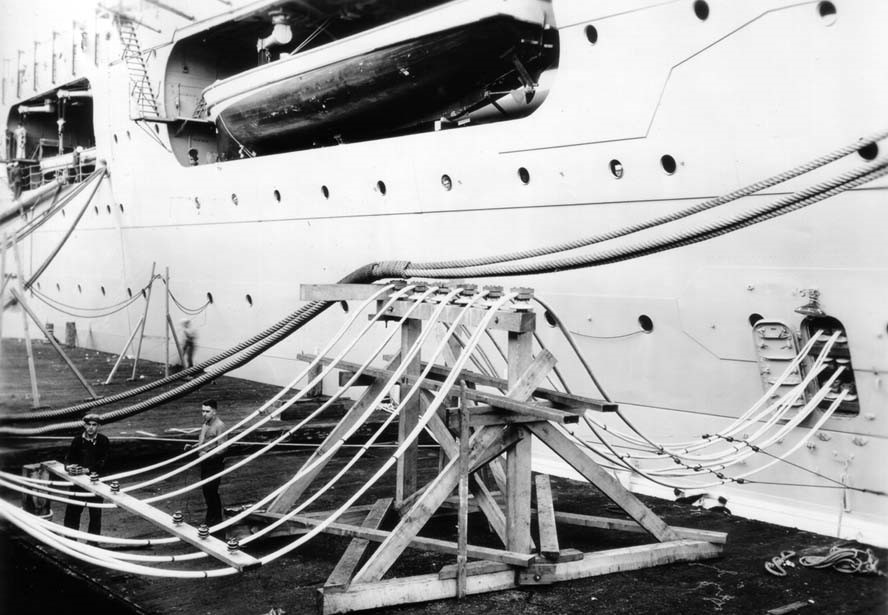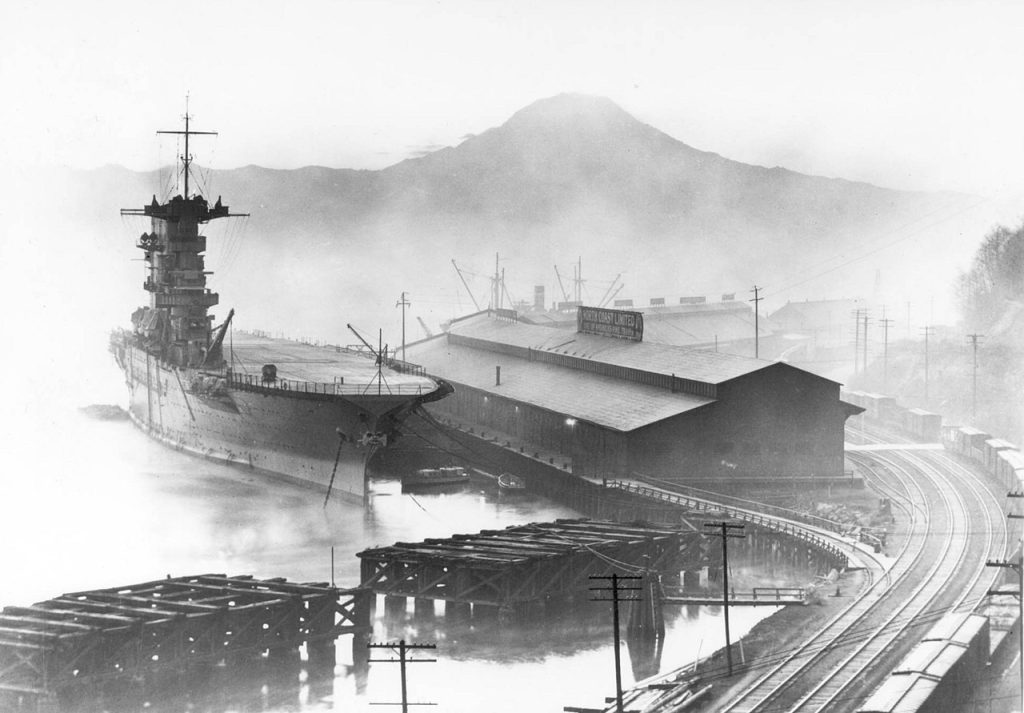USS Lexington Powered the City of Tacoma For a Month
In 1929, the USS Lexington, an aircraft carrier of the United States Navy, was repurposed to provide emergency electrical power to Tacoma, Washington, during a severe drought that crippled the city’s hydroelectric power sources.

For about a month, the Lexington, using its turbo-electric propulsion system, generated electricity for the city.
Background of the Tacoma Power Crisis
The late 1920s in the Pacific Northwest of the United States was a period characterized by significant industrial expansion and urban growth. Cities like Tacoma, Washington, were thriving centers of commerce and industry, their economies bolstered by an abundance of natural resources and a strategic location. Tacoma, in particular, had developed into a significant hub for lumber and paper production, owing to its proximity to vast forest resources and its advantageous coastal location.
This period of growth was accompanied by an escalating demand for electrical power, essential for both residential and industrial needs. Tacoma’s power infrastructure, like many other cities in the region, was heavily reliant on hydroelectric power. The Pacific Northwest, blessed with numerous rivers and streams, had harnessed these natural water sources to generate electricity.

Some of Tacoma’s citizens were allowed to take a look around the ship. There was even a Christmas event held for some of the city’s children. Image by Tacoma Public Library.
However, in 1929, this dependence on hydroelectric power became a vulnerability. The region experienced an extraordinary meteorological phenomenon—a severe drought that dramatically reduced water levels in rivers and reservoirs. The drought’s impact on hydroelectric power generation was immediate and severe. Power plants, which were designed to capitalize on the consistent flow of the region’s rivers, found their output capabilities drastically reduced as water levels fell.
The situation in Tacoma became particularly critical. The city’s power supply was threatened as the drought continued, with reservoirs reaching alarmingly low levels. This posed a significant threat not only to the residential areas but also to the industrial sector, which was the backbone of the city’s economy.

USS Lexington moored at the Baker docks in Tacoma during the crisis.
The crisis called for an urgent and innovative solution. It was in this context that the idea of utilizing a naval vessel, specifically the USS Lexington, was proposed and eventually realized. The decision to use a warship for peacetime civic utility was unprecedented and reflected the severity of the situation. The urgency of the crisis necessitated swift action, and the cooperation between the city of Tacoma, the federal government, and the U.S. Navy marked a remarkable instance of collaboration in the face of adversity.
USS Lexington
The USS Lexington, designated CV-2, was commissioned in 1927. She was among the first generation of aircraft carriers in the United States Navy, a new breed of warship that would come to redefine naval warfare. The Lexington was not only significant for her role in the evolution of naval strategy but also for her groundbreaking design and engineering features, which inadvertently positioned her to play a pivotal role during the Tacoma power crisis.
At the heart of the USS Lexington’s capabilities was her propulsion system, a feat of engineering that set her apart from many other ships of her era. She was powered by turbo-electric propulsion, a sophisticated and relatively new technology for the time. This system involved generating electrical power using steam turbines, which then drove electric motors connected to the ship’s propellers. This design offered several advantages, including improved efficiency, greater reliability, and enhanced maneuverability.

Power was fed through twelve cables coming from a single generator on board the ship.
The power generation capacity of the Lexington was immense, especially for the era. Her four steam turbines were capable of producing a total of 180,000 horsepower, an output that not only propelled the massive vessel through the oceans but also had the potential to generate a significant amount of electrical power. This aspect of her design was primarily intended to meet the substantial energy needs of the ship herself, including her propulsion, lighting, onboard equipment, and the operation of her aircraft.
However, what made the Lexington truly unique was not just her size or her role as an aircraft carrier, but the versatility of her power generation capabilities. While most ships of the era were designed with a single purpose in mind, the Lexington’s turbo-electric system inadvertently equipped her with the ability to function as a mobile power plant. This feature, while not envisaged when she was designed, would prove invaluable during the Tacoma power crisis.
The Mission to Power Tacoma
The idea to employ the Lexington for civilian power generation was both novel and audacious. It originated as a desperate measure to combat the unprecedented power shortage in Tacoma caused by the drought-affected hydroelectric plants. The proposal required not only the approval from the highest levels of the U.S. Navy and government but also a collaborative effort between the military and civilian sectors.
Once the mission was greenlit, a host of technical and logistical challenges had to be overcome. The primary task was to integrate the power generated by the Lexington’s turbo-electric propulsion system into Tacoma’s electrical grid. This was no small feat, considering the differences in engineering standards and requirements between a naval vessel and a civilian power infrastructure.

USS Lexington arrived in Tacoma with a full marching band playing on the dock.
USS Lexington arrived in Tacoma on December 17, 1929. Once operational, her impact was immediate and significant. The carrier began generating electricity, feeding it into Tacoma’s grid, and effectively mitigating the power shortage. The ship operated as a floating power station, its engines running round-the-clock to produce the much-needed electricity.
In a matter of weeks, the city of Tacoma went from facing a severe crisis to having a temporary but stable power supply. From December 17 until January 16, the ship sent out over 4.5 million killowatt hours, roughly one quarter of the city’s electricity. During this time, the skies opened and rain, along with melting snow, refilled the dam’s heavily depleted reservoirs.
As the drought abated and the hydroelectric power plants resumed their normal operations, the Lexington’s extraordinary mission drew to a close. The ship disengaged from the city’s power grid, removed the extensive cabling, and prepared to return to her usual duties.





